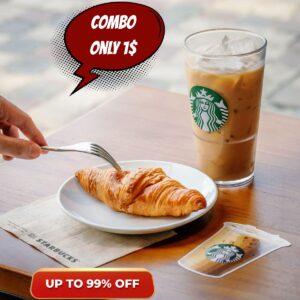Starbucks. The name alone is synonymous with coffee culture in the United States. From bustling city corners to suburban shopping centers, the ubiquitous green siren logo is a familiar sight, inviting millions to grab their daily brew, catch up with friends, or find a quiet spot to work. But how did Starbucks grow from a single Seattle storefront into a beloved, pervasive force in American daily life?
It’s more than just selling coffee; it’s about crafting an experience, building community, and constantly adapting to changing consumer habits.
The “Third Place” Revolution
When Howard Schultz, then Director of Retail Operations, first encountered the Italian coffee bar experience, he envisioned something revolutionary for America: a “third place” – a welcoming, comfortable space distinct from home (first place) and work (second place). This concept became the cornerstone of the Starbucks store strategy in the US.
Each store was designed to be:
- An inviting atmosphere: Warm lighting, comfortable seating, carefully curated music, and the pervasive aroma of coffee beans.
- A community hub: A place for casual meetings, study sessions, first dates, or simply a moment of solitude.
- A consistent experience: Whether you’re in New York City or a small town in Kansas, the fundamental “Starbucks experience” aims to be consistently familiar and comforting.
This deliberate focus on ambiance and creating a sense of belonging transformed the simple act of buying coffee into a daily ritual and a lifestyle choice for millions of Americans.
The Menu: From Simple Brews to Endless Customization
While the early Starbucks stores focused on high-quality roasted beans and basic espresso drinks, the menu quickly evolved to cater to the diverse tastes of the American public.
- The Rise of Customization: Starbucks popularized the concept of highly customized beverages. From an array of milk options (dairy, oat, almond, soy) and sugar-free syrups to extra shots and various toppings, customers could craft a drink precisely to their liking. This personalization fostered a sense of ownership and loyalty.
- Seasonal Sensations: The US market, in particular, embraced Starbucks’ ingenious seasonal menu items. The Pumpkin Spice Latte (PSL), holiday lattes, and refreshing summer drinks became cultural phenomena, driving anticipation and sales year after year.
- Beyond Coffee: Recognizing diverse preferences, Starbucks expanded its offerings to include a wide range of Frappuccinos, iced teas, refreshers, and non-coffee beverages, ensuring there was something for everyone.
- Food for Every Time of Day: From breakfast sandwiches and pastries to lunch wraps and sweet treats, Starbucks stores in the US have steadily built out their food menu, becoming a convenient stop for meals and snacks throughout the day.
Accessibility and Ubiquity: On Every Corner
The sheer number of Starbucks locations across the US is astounding. This widespread presence is a result of strategic expansion, making it incredibly convenient for Americans to access their favorite coffee.
- Diverse Store Formats: Starbucks has adapted its store formats to fit various environments, including standalone cafes, drive-thrus, kiosks in grocery stores and airports, and licensed stores within other businesses. This adaptability ensures they can be “where the customers are.”
- Drive-Thru Dominance: Especially popular in the US, drive-thrus have become a crucial part of the Starbucks experience, catering to the American preference for convenience and on-the-go service.
Adapting to the Digital Age
Starbucks has also been at the forefront of integrating technology into the coffee experience in the US:
- Starbucks Rewards Program: This highly successful loyalty program encourages repeat business, offering free drinks, personalized offers, and a seamless payment experience.
- Mobile Order & Pay: The Starbucks app revolutionized convenience, allowing customers to order and pay ahead, skipping lines and picking up their customized drinks in minutes. This feature became especially critical during and after the pandemic.
- Delivery Partnerships: Partnering with third-party delivery services further extends Starbucks’ reach, bringing coffee directly to customers’ homes and offices.
The Starbucks store chain in the US is a testament to successful brand building, strategic expansion, and a deep understanding of consumer behavior. It’s a place where quality coffee meets personalized service and a comfortable atmosphere, making it a beloved and enduring part of the American landscape.
What does your local Starbucks mean to you? Share your thoughts in the comments below!


